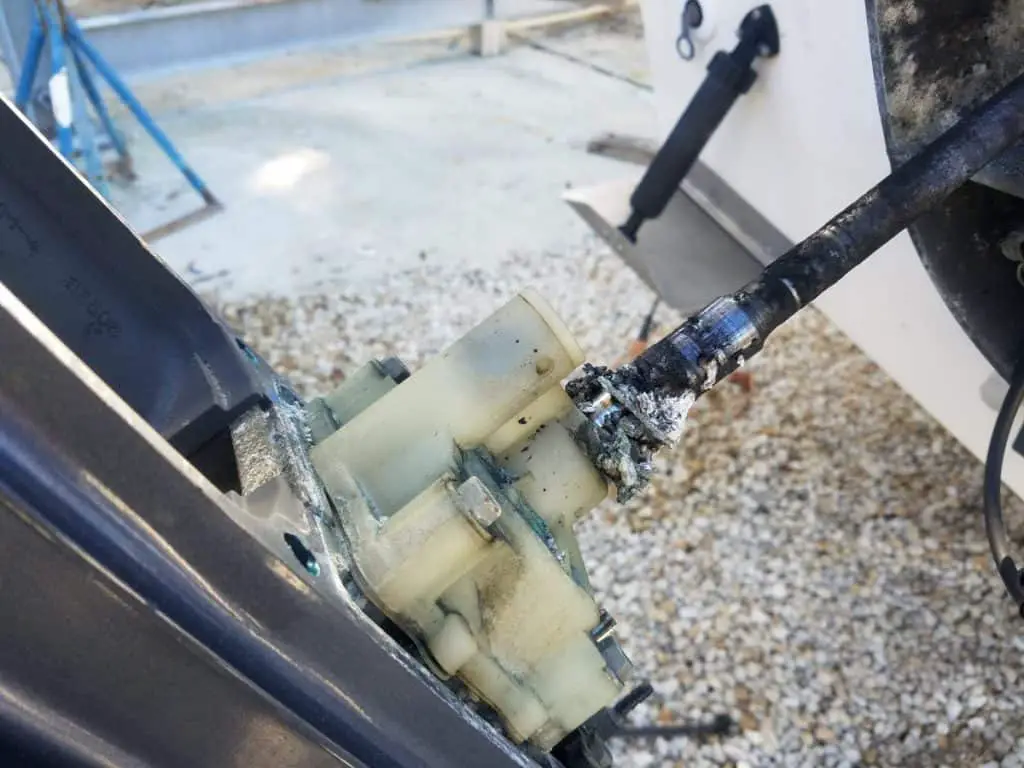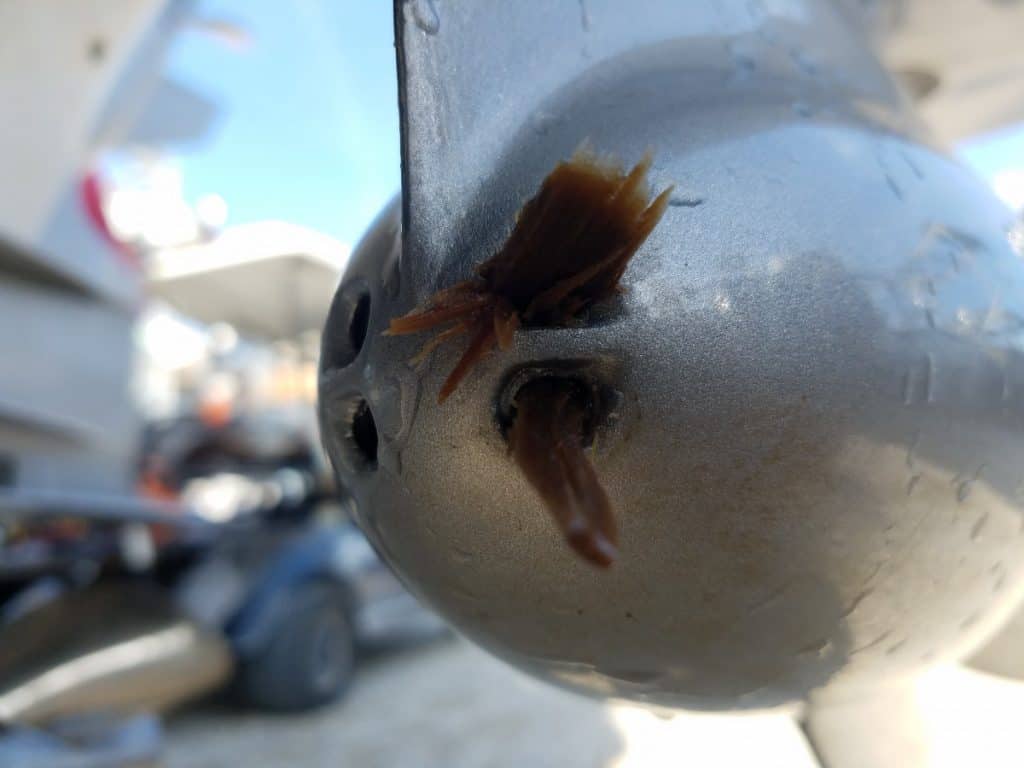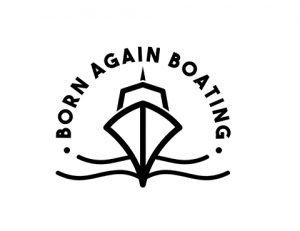It’s not uncommon to want or need to run an outboard engine when it is on the trailer. At a marina on the hard, or lifted out of the water on a lift.
So, Can You Run Your Outboard Out Of The Water? Yes, outboards are designed to use water to cool the engine. So as long as you supply the engine with water. You can safely run the engine while it is “out” of the water!
There are a couple of stipulations that you should be aware of though when it comes to running it out of the water, here are all of your do’s and don’ts!
What Happens If You Start A Boat Out Of The Water?
When we are talking about outboards, it’s pretty normal for the engine to be trimmed up out of the water. Which is the way that you should leave them when you leave them in the water!
(More about the whole leaving and trimming thing here!)
So it’s happened to pretty much all of us. Where we accidentally started the outboard out of the water! Don’t worry, in most cases, no harm no foul.
That is, depending on how long you let it run. But most of us catch ourselves right when we do it because the engine is going to be super loud when it is running without any water.
And as long as you catch it and turn the engine off, you’ll be fine. But if you let the engine sit there and run, well, now you are potentially going to have some problems to deal with.
Starting with the fact that when an outboard runs for say, over 30 seconds. The rubber impeller that pumps your cooling water. Is going to get hot, melt, break, and fail.
You can learn about the signs of a bad water pump impeller in this article here.
If you let it go for too long, you are going to eventually overheat the engine. Which is going to cause you all kinds of other issues, and potentially end up with some catastrophic engine damage!
But if you are supplying water to the engine, then it will be cooling, protecting the impeller, and you won’t have any issues at all. But we’ll cover how to properly run the engine out of the water in a minute.
This brings us to another question though. How long can a motor run without water?
How Long Can You Run A Boat Motor Out Of The Water?

This is going to depend a lot on the size and environmental conditions. Since you know what will happen if you run the engine out of the water.
Or you accidentally run the outboard dry. The duration of time that it was running will determine the damage factor.
Like we said if it was only a couple of seconds. Ninety-nine times out of a hundred. You won’t see any issues.
It’s not uncommon to have an issue with an engine. And during the process of troubleshooting. If you can’t get the engine to start and you are trying stuff to get it running.
You might end up fixing the issue and getting the engine to crank over and start. Which is a great thing! So if the engine kicks over and runs for a couple of seconds.
But you don’t have any water running to it, just turn the engine off really quick and hook up your water! (We’ll get to the hookups, don’t worry!)
Then on the other hand, if you just sit there and let the engine eat without the water. Well, I say anything over 20-30 seconds is going to be asking for a problem.
And if you get it up into the minutes. You are going to be dealing with some other issues pretty quickly!
So, try not to let your outboard engine run dry for any length of time at all. To save yourself some headaches!
How Can You Run An Outboard Out Of The Water?
By simply hooking up water to the engine and allowing the water to run while the engine is running!
There Are Basically 3 Ways To Run An Outboard Our Of The Water.
- By getting a trash can or drum that the entire engine will fit in, filling it with water, and making sure the water stays above the anti-ventilation plate.
Here’s a video on our Youtube Channel about the anti-ventilation plate! - Attaching a set of lower unit ear muffs to the lower unit and having the water on.
- Hooking the engine up to the flush port and supplying water to the engine this way.
Now, there are some stipulations to all three of these, and one of them might get some people pretty excited!
The trash can/drum method is probably going to be the absolute “best” way of supplying water. Though, in many cases, this is going to be a little overkill.
In most cases when you are trying to run the engine out of the water. You are going to be trying to troubleshoot something, just let the engine run or for some other reason.
Which, usually doesn’t require the bucket method. But if you use the bucket method, make sure that when the engine is running. That you keep the water above the anti-ventilation plate.
Because it will be spraying water out the tell-tale, slowly lowering your water volume in the drum.

Now the second way is the next best way.
Being to use a set of earmuffs on the lower unit.
This allows the water pump to do its job, pulling water up into the engine, and circulating it through the engine.
Now hose water pressure is going to play a big part here. As well as the type of lower unit design you have.
Many lower units have what is called, low water pick-ups. Which is a water pick up at the bottom of the lower unit. Or on the nose cone of the lower unit.
So you will need to make sure that these are plugged off, or you will be losing a lot of hose water out the front of the lower.
Not getting you the proper volume of water to the engine. Depending on the size of the engine. And it will overheat after running for a few minutes.
Bringing us to our third option, and the controversial option as well.
Running An Outboard Out Of The Water On The Flush Port!
For some reason, this has become a pretty controversial topic over the years. And, for a time, it was really frowned upon and recommended not to do.
But, as people thought about it, and as time went on. It’s a pretty common practice for people, mechanics, dealers, and reps to run engines on the flush port.
WITH a couple of stipulations. The first is the size and style of the engine. Just like running on the earmuffs. Water hose pressure plays a huge part here.
On engines like a Yamaha 425, or a Mercury 600, you might not have the water volume to run the engine on the flush port.
Ultimately you have to think about what is going on here.
Water is the water doing? Two things: One it is lubricating the propeller, and two it is cooling the engine.
If the engine is too big, and you don’t have water volume, it won’t get to the impeller, burning that up. And it won’t fill all of the cooling passages, overheating the engine.
So, on most other engines, outside of the massive ones. With water pressure, turn the hose on and watch where the water comes out.
You will see water come out of the telltale and out of the prop. Telling you it is going through the engine and out the exhaust.
But you will also notice that it is coming out of the water pump intakes as well. Telling you it is flowing through the water tube over the impeller.
Giving your impeller lubrication. But that brings in the next stipulation. On the earmuffs, you have the ability to rev up the engine a little more.
I’d say, you shouldn’t be revving the engine upon the dry land over 1500 to 2000 RPM anyway though. But, you won’t burn up your impeller, if you hit that high rev for a second.
On the flush port. You CAN NOT DO THIS!
The RPM will spin the impeller creating pressure, pushing all the water off the impeller. Burning it up. So, on the flush, you can’ go above an idle or maybe 1,000 RPM for a brief period of time.
Also, you shouldn’t just let the engine run on the flush port like you can on the muffs. The flush port is fine for say a 1 to 5-minute period. For the earmuffs, you can go about 15 minutes.
But you shouldn’t need to run the engine for much longer than that when it is out of the water. If you need more time, it’s time to get out the drum, or hit the water!
Here is an article that covers more of this flushing topic!
When it comes to running your outboard out of the water. Just use some common sense and don’t leave your engine running.
Stay there, watch your tell-tale, and be looking at the engine temp. The water intakes for water flow. And be aware of what is going on with the engine!
Have you ever wanted to make flushing your engine easier? Try this type of system here!
Check Us Out!
We hope that this has helped you understand what happens if you run your engine dry and how you can run your outboard out of the water!
If you have more questions or want to learn more about your boat and its different systems. You should consider joining our Boating Academy where we have created HUNDREDS of video courses teaching you basically everything about your boat!
There are also even more helpful videos on our Youtube channel where we create even more boating videos!
You can also save some money by using our coupons when you need to buy stuff from your boat by using any of these coupons here at Partsvu!
And if you would like to support us to continue bringing you great content, please click the link below to Amazon where we get a commission from anything you are already going to buy! Click Here To Amazon!
Here are some other super helpful articles that you might find interesting!
